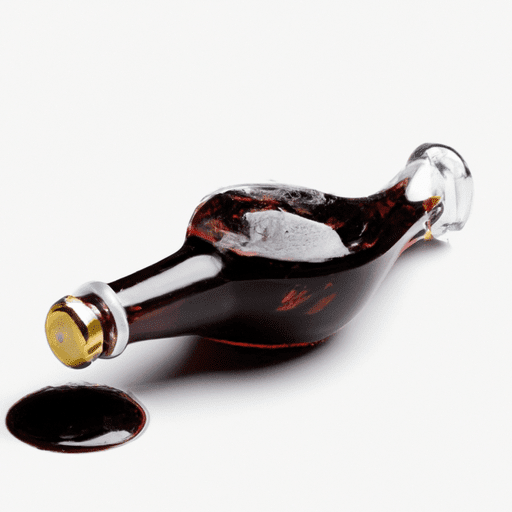The Art of Balsamic Vinaigrette Dressing
When it comes to dressing up a salad or enhancing the flavor of various dishes, balsamic vinaigrette dressing is a classic choice that never fails to deliver. With its rich, tangy, and slightly sweet taste, this versatile dressing has become a staple in kitchens around the world. Let’s dive into the wonderful world of balsamic vinaigrette and explore its culinary prowess.
Taste Sensations
Balsamic vinaigrette dressing offers a symphony of flavors that dance harmoniously on the palate. Its signature dark color and thick consistency come from reduced grape must, the freshly pressed juice including the skins, seeds, and stems of grapes. This reduction is then masterfully blended with high-quality vinegar, creating a captivating balance of sweetness and acidity.
The complex flavor profile of balsamic vinaigrette dressing consists of bold and rich notes, reminiscent of black cherry, fig, or even molasses. The pleasant tanginess of the vinegar provides a refreshing contrast, while the subtle sweetness accentuates the overall experience. Together, these flavors create a delightful harmony that elevates any dish it accompanies.
A Versatile Culinary Companion
Balsamic vinaigrette dressing’s versatility knows no bounds. Its subtle and distinct taste complements a wide range of ingredients, making it a go-to choice for both simple and elaborate dishes. Here are some common uses that allow this dressing to shine:
Salads: Balsamic vinaigrette dressing effortlessly enhances a crisp salad, elevating its freshness and adding character. Whether drizzled over mixed greens, roasted vegetables, or a caprese salad, it brings depth and complexity to the bowl.
Marinades and Glazes: This dressing’s acidity and natural sweetness make it an excellent marinade for meats, such as chicken or beef. It can also be reduced further into a luscious glaze, perfect for grilling or roasting.
Vegetable Dips: Balsamic vinaigrette dressing can become the star of a flavorful vegetable dip. Pair it with carrot sticks, cucumber slices, or bell pepper strips for a healthy and delectable snack.
Sandwiches and Wraps: When used as a spread or drizzle, balsamic vinaigrette dressing adds a burst of flavor to sandwiches and wraps, enhancing every bite without overpowering other ingredients.
Nutritional Notes
Apart from its exceptional taste, balsamic vinaigrette dressing brings a host of nutritional benefits to the table. It’s important to note that the specific nutritional content can vary depending on the brand and recipe. However, this dressing generally offers the following:
Low in Calories: Balsamic vinaigrette dressing is relatively low in calories, making it a sensible choice for those watching their calorie intake.
Antioxidant-Rich: Balsamic vinegar, a key component of the dressing, contains antioxidants that help combat oxidative stress and reduce inflammation in the body.
Potential Blood Sugar Benefits: Some studies suggest that balsamic vinegar may help regulate blood sugar levels, thanks to its acetic acid content. However, further research is needed to fully understand these potential benefits.
As with any ingredient, moderation is key. While balsamic vinaigrette dressing can be a healthy addition to your meals, it’s important to be mindful of portion sizes and overall dietary balance.
The Legacy of Balsamic Vinaigrette Dressing
Balsamic vinegar, the star ingredient behind this dressing, boasts a rich historical legacy. Originating from Modena and Reggio Emilia in Italy, this precious elixir is crafted through a meticulous aging process. Traditional balsamic vinegar can take anywhere from 12 to 25 years to mature, with an intensely concentrated flavor that stems from wooden barrels and the passing of time.
Historically, balsamic vinegar was considered a luxury item reserved for aristocracy due to its rarity and exceptional taste. Today, while the traditional methods remain revered and protected, the production of balsamic vinegar has expanded to meet global demand, allowing more people to savor its unique allure.
Balsamic vinaigrette dressing offers a symphony of flavors that can transform any dish into a culinary delight. Its rich taste, versatility, and nutritional benefits make it a staple in the kitchen, while its intriguing history adds a touch of elegance. So, whether you’re dressing a salad, marinating meats, or adding a special touch to a sandwich, balsamic vinaigrette dressing is sure to elevate your culinary creations with its distinct and delightful charm.
Origin: Balsamic vinaigrette dressing originated in Italy and is associated with the region of Modena in the Emilia-Romagna region. It has been made for centuries using traditional methods.
Common Uses: Balsamic vinaigrette dressing is commonly used as a salad dressing, where it adds a tangy and slightly sweet flavor. It is also a popular condiment for vegetables, roasted meats, and grilled seafood. Additionally, it is used in marinades and sauces to enhance flavor.
Nutritional Benefits: Balsamic vinaigrette dressing is low in calories and fat, making it a healthier alternative to some other dressings. It contains small amounts of vitamins and minerals, including calcium, iron, and potassium. However, its nutritional value may vary depending on the specific recipe and brand.
Unique Properties: Balsamic vinaigrette dressing gets its unique flavor from aged balsamic vinegar. Traditional balsamic vinegar is made from reduced grape juice that is aged in wooden barrels for at least 12 years, resulting in a rich, complex, and slightly sweet taste. The dressing typically combines the vinegar with olive oil and other ingredients to create a harmonious balance of flavors.
Historical Significance: Balsamic vinegar has a long history that dates back to ancient Rome, where it was prized for its medicinal properties. In Modena, Italy, the traditional production of balsamic vinegar has been carefully preserved for centuries, with the special “balsamic consortium” overseeing the traditional methods and quality standards. Traditional balsamic vinegar is highly regarded and can be quite expensive.




Use the share button below if you liked it.
It makes me smile, when I see it.